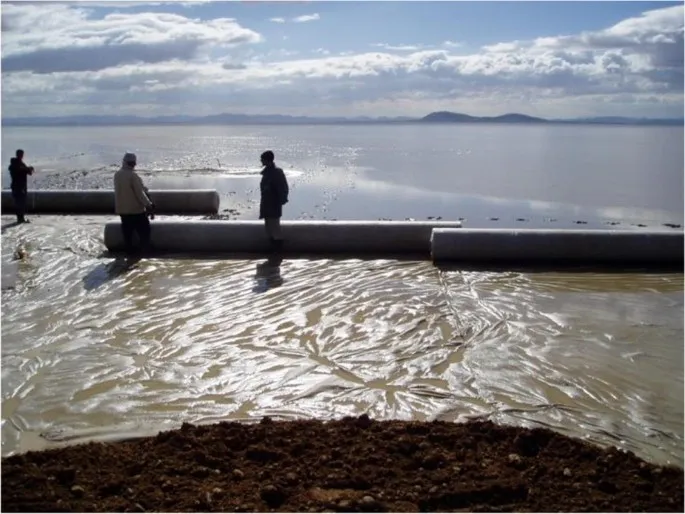
Geotextile tube is one of the geosynthetics structures that are increasingly used in coastal protection. Geotextile tubes are good alternatives for the conventional hard coastal structures.
Geotextile tubes are made from high-strength geosynthetic fabrics that allow the water to flow through pores while retaining the filling materials. They are widely used for dewatering, flood control, and coastal protection. Geotextile tubes can be used in various conditions as a result of the low consumption of construction cost and time, the requirement of simple equipment, and low-skilled workers. Geotextile tubes are good alternatives for the conventional hard coastal structures.
However, they have lower resistance to wave attacks. Also, the design code is insufficient for geotextile tube applications. Sandy beaches and mudflats are two types of the geotechnical stratum of the coasts. The morphological characteristics of sandy coasts and mudflats vary due to the variation in wave propagation towards the beach. For example, sandy beaches are continually reshaped by higher intensity waves and tides. Fine sand will be washed away and leave coarse sand to withstand the wave forces. On the other hand, mudflats that are composed of sand, clay, or fine silt occur at the coastlines which are protected from strong waves. Finally, lower wave energy allows the deposition of fine particles which further leads to the formation of the mudflat. In many tropical countries, mangroves grow along the muddy coast. Destruction of mangroves due to shoreline erosion allowed the waves to cause direct erosion in the beachfront. Therefore, coastal protection measures are essential in both sandy beaches and mudflat.
123


